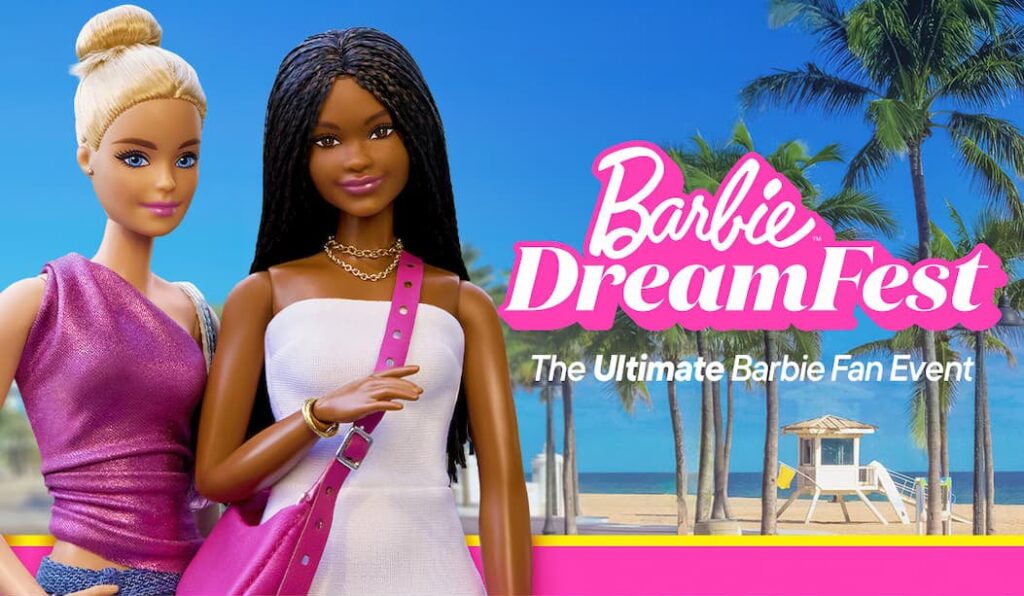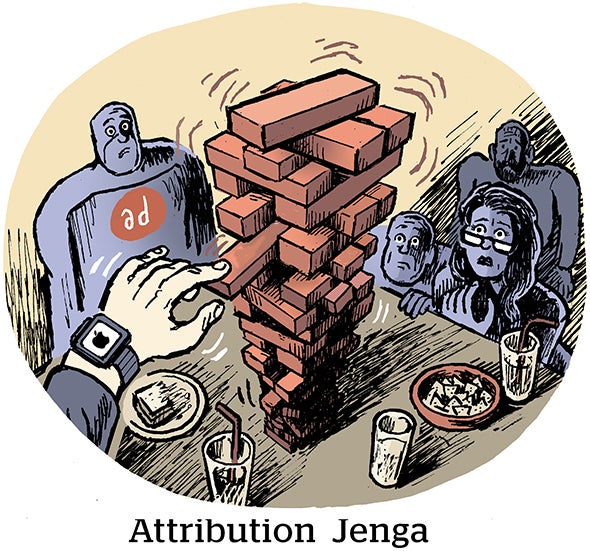NEW YEAR’S GREETINGS
I read Ray Schultz’s New Year’s curmudgeon column (Direct Hit, January) thinking it quite uncharacteristic of him. I wanted to counter with a few thoughts on the glass being half empty or half full.
First of all, the economy. What would he expect from a country that has been on a 50-plus-year consumer spending spree? At some point there has to be a cool-down period. It’s healthy for both the human and economic conditions.
The Post Office…whoa, I’m reluctant to go there. Their troubles surely typify how the government will always be challenged in a free market system. The government is slow, too slow to change in an economy and culture that changes at lightning speed. What else would one expect from an institution that moves in dinosaur tracks? What surprises me is how reluctant many traditional catalogers are to switch to the more cost-effective means of e-mail communications instead of the old paper and postage. “E-mail or catalog?” is kind of like Ford asking the question, “Horse or Model T?”
The ever-dwindling lists of names? I applaud consumers who say, “Don’t talk to me unless you have something relevant to say.” For decades we have been flogging the mass-communication message to our lists. It is not surprising that those that haven’t really leveraged their consumer knowledge into more relevant database communications see fewer direct and e-mail lists. The technology exists for customization in both arenas. It’s a no-brainer to consider that a consumer public that is “overstuffed” is going to be very selective about their purchases. They require relevance in their merchandising offers and product selection. As an industry, by and large we are very competent in our analytical practices, but not so in our executions in either direct mail or e-mail, if we aren’t truly leveraging the power of our consumer knowledge base in fact rather than just in theory.
Author Faith Popcorn told us more than a decade ago that American consumers want personalized, individualized merchandising and marketing. Where marketers have adopted this message of relevance, they have thrived in all channels. So I guess it depends on which side of the fence you’re standing on as a direct marketer whether the glass is half empty or half full.
I have great confidence that the glass is half full for those who have moved forward with both personalization and selective merchandising. (The glass is no doubt half empty for those who are still flogging the same old mass-marketing techniques.) Consumers are smarter, savvier and more demanding of their privacy and relevance in the communications they are willing to respond to. They have set the bar higher, and we marketers have the tools to respond accordingly with more relevant communications and selective merchandising that fits their unique and individual needs.
I’ll even drink to that!
Kathryn Wardell
Vice President, Business Development
Western Region
Exmplar Inc.
Ray Schultz is right about all the doom and gloom he mentions in his January editorial. But there’s one really important thing he forgot that makes the glass, in most cases, much more than half full. It’s that we are healthy and can get out of bed in the morning.
As I say when I end every speech and seminar I give, it’s not life or death, it’s only direct marketing. Count your blessings and be thankful for what you have — health, family and friends.
Dick Goldsmith
The Horah Group
New York
BORN CYNICAL?
The following are two examples of honesty in advertising copy using the word guarantee (Curmudgeon-at-Large, January).
-
Sign on the side of a garbage truck: “Satisfaction guaranteed or double your trash back!”
-
Billboard next to a funeral home: “We’ll be the last to let you down. Guaranteed!”
Don’t be too cynical, Hersch old boy…then again, we must always remember that no one was ever born cynical.
Were they?
Duke Schneider
Fort Myers, FL
MAKEOVER MAILBAG
First off, I love Tom Collins’ columns. Finding material must be easy, given all the stupid direct response ads I see.
The College of New Rochelle ad is, of course, absurd (The Makeover Maven, January). But I did want to point out that there was actually a smidgen of sense in the designer’s strategy.
The young woman is not “hungrily” eyeing the machine. Rather, she’s furiously eyeing the machine because she inserted her money and — gasp! — the bag of chips is stuck (second row from top, on the left)!
Here’s where CNR comes to the rescue:
You’re hungry, and that machine is keeping you from your salt and saturated fat. What to do? Take the kick boxing course at The College of New Rochelle and you’ll learn how to wield just the right kick to dislodge the bag (sort of alluded to later in the column), fill your tummy and avoid killing off a patient or two. What’s more, that darned machine won’t mess with you again!
Also, I think the woman in the ad is a nurse, not a student. I don’t think students typically wear IDs around their necks, and her outfit looks like a uniform to me. And notice the “clog” type shoes she’s wearing. Lots of nurses and surgeons wear these since they’re on their feet a lot. Tom was on the right track in mentioning nurses as a target group. He should have included them in his makeover.
Keep up the good work.
Phil Goodhart
Trumbull, CT
I found Tom Collins’ latest column particularly amusing because I’d seen that same ad every workday for about a month when it was running in my Metro-North train and also recently had the experience depicted in the illustration.
Like him, I had puzzled over what was going through the minds of the people who had conceived of and approved it. Did they really think they would attract students by suggesting that the college’s wonderfully esoteric courses would prove unexpectedly useful someday?
Mr. Collins’ makeover conveys nearly everything a prospective student would want to know about the school, as well as its differentiating benefits over the almost limitless competition. And although the column barely mentions it, the two photographs he chose reveal that The College of New Rochelle will be a positive, supportive, friendly experience, rather than the cold, lonely and frustrating one illustrated in the real ad.
By the way, I can tell you from personal experience: Hitting or kicking such a snack dispenser does nothing. The correct response is to tip the machine slightly forward.
Peter Kassan
Dobbs Ferry, NY
Wow! That ad was horrible. Somebody got paid and came up with that original…that’s the stuff that makes me embarrassed sometimes to be in marketing.
Tom Collins’ makeover was neat and clean. It certainly was conservative, but clearly targeted those three groups much better. I enjoy his column on a regular basis.
Thanks to Tom for improving the quality of marketing!
Gary Zenker
I read with interest Tom Collins’ column concerning the rather baffling ad for The College of New Rochelle, and I just wanted to point out a couple of things I spotted while looking at the ad.
-
The young lady in the picture is not a student. She is a nurse — look more closely at the scrubs she’s wearing and her footwear. There looks to be a very “dim” doctor by the doors at the end of the hallway.
-
She is not “hungrily eyeing” the snack dispenser machine. She is looking at it in frustration, hence the grimace on her face and the clenching of her knees. Her chosen snack has gotten stuck — see the bag of chips clinging on for dear life in the second row of the machine?
-
As you suggested, the class is presumably training for giving a “good swift kick” to the machine to dislodge her chips.
I still don’t completely understand the relevance of the ad, unless it’s to “prepare for life’s challenges” by attending CNR. If that’s the point, it’s almost definitely lost.
However, I don’t really like Tom’s makeover ad, either. It’s trying to say too much. Maybe that’s the point of the original ad — to make you so confused that you’ll contact them to find out what it’s all about! Who knows?
Karen Glean
Marketing Services Manager
The HOMAC Cos.
I have been shaking my head for months, wondering what the devil The College of New Rochelle is up to in its current ad campaign.
Tom Collins’ wonderful makeover column was an act of charity. Maybe now the emperor will put on some clothes.
Norma Vavolizza
Principal
NV Communications
New York
In The College of New Rochelle ad Tom Collins critiqued, I believe he missed the ad’s focus.
The woman has put money in the snack machine for a bag of Chex Mix and the machine has not released the bag properly. It’s stuck. She is not eyeing the snack hungrily as you suggest; she is frustrated and/or angry. This is a humorous take on the “Preparing to face life’s challenges” theme that so many colleges use. Here one of “life’s challenges” is the frustration of machinery failing you and not giving you the item you’ve paid for. Kick boxing is used as college course example because the martial arts teach a series of actions to perform that can resolve a given situation.
The ad would be much improved, in my opinion, by showing the woman in a karate-like stance — perhaps with her hands outstretched in a “karate-chop” position — and facing the machine as if to do battle with it. Her face needs to show aggression or determination clearly.
(Of course, kicking or “karate-chopping” the machine wouldn’t cause the Chex Mix to be released. You need to grasp the machine by the sides and shake it.)
I wouldn’t call the ad bad. I’d say it was a first draft. It’s an example of why it’s important to show your stuff to people and request feedback.
Katharine M. Holden
Promotions and Circulation Manager
IFAI
Roseville, MN
Tom Collins replies:
Since I wrote the column, I have learned something about the ad which may help to explain how it came to be and what it was trying to accomplish. A friend has informed me that this ad and others like it have been part of a New York City subway poster campaign.
In mid-January, another poster in the series appeared as an ad in the education section of The New York Times, this one even more baffling: it shows a wildly diverse group of six elevator passengers and a course catalog clipping for “SOW 321: Human Behavior and Social Environment.”
At least the candy machine photo was mildly amusing; this one is not.
In this light, the ads can be viewed as a brand advertising campaign designed to build an image of CNR as a cool college in the minds of local young people. The sales effectiveness of brand advertising is as difficult to measure precisely as it was 30 years ago, so I am sure no one (including me) can say whether this campaign is effective as brand-building display advertising or not. But as print advertising, it seems a terrible waste of precious funds which otherwise could have been used for targeted, measurable, informative direct response advertising, like the kind I showed in my makeover.
talk to us!
We’d like to hear what you have to say about us or about news, trends and issues in direct marketing. To contact the editor:
| DIRECT, 249 W. 17th St., 3rd Fl., New York, NY 10011-5300 | |
| fax | 212-206-3618 |
| rschultz@primediabusiness.com | |
| phone | 212-462-3371 |



